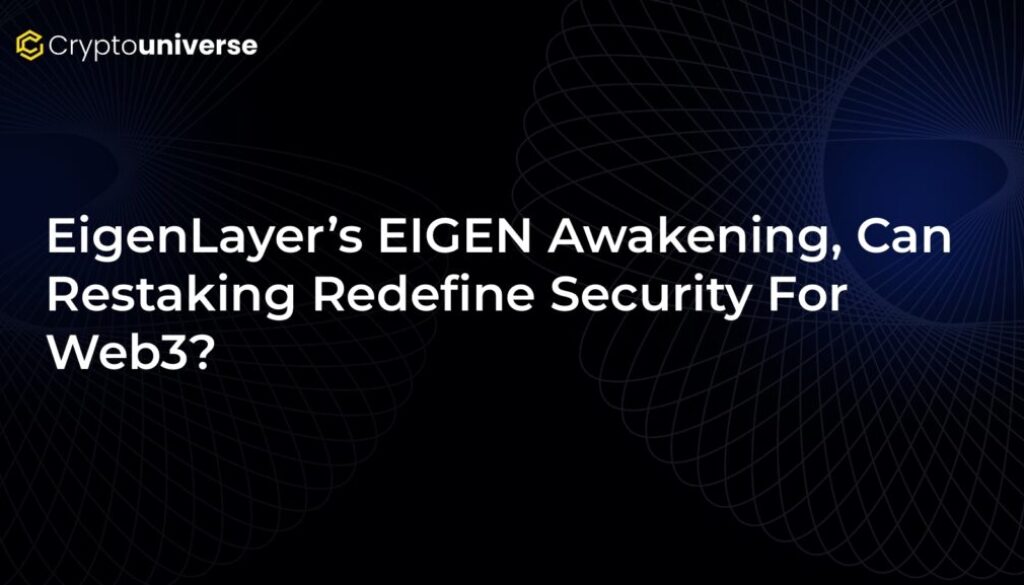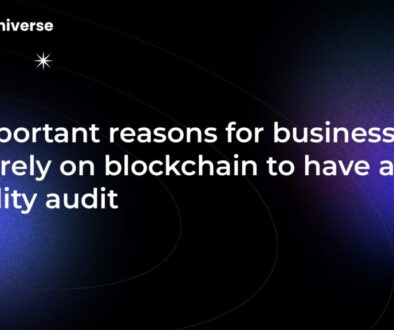EigenLayer’s EIGEN Awakening, Can Restaking Redefine Security For Web3?

The High-Stakes World of Web3 Security
In the decentralized world of blockchain, security isn’t just a feature—it’s the foundation upon which everything is built. A single vulnerability can lead to catastrophic losses, making the quest for robust, scalable security a top priority. For years, every new blockchain, protocol, or decentralized application (dApp) faced the same monumental task: building its own security from the ground up. This has led to a fragmented landscape where security is siloed and expensive to maintain. Enter EigenLayer, a revolutionary protocol on Ethereum that aims to change the game with a concept called restaking.
The launch of its native token marks what many are calling the start of EigenLayer’s
What is Restaking? A New Paradigm for Crypto-Economic Security
At its core, restaking is a mechanism for leveraging existing security. Imagine you have already staked your Ethereum (ETH) or hold a liquid staking token (LST) like stETH or cbETH to help secure the Ethereum network and earn rewards. EigenLayer allows you to “restake” that same capital to simultaneously secure other protocols and services built on its platform.
Instead of forcing every new project to bootstrap its own validator set—a costly and time-consuming process—EigenLayer creates a massive, shared pool of security that other applications can rent. This simple yet powerful idea promotes capital efficiency, allowing staked assets to do double duty and secure multiple networks at once.
The Pillars of the EigenLayer Ecosystem
EigenLayer is more than just a concept; it’s a thriving ecosystem with several key components working in synergy.
Actively Validated Services (AVSs)
The protocols and services that tap into EigenLayer’s shared security are known as Actively Validated Services (AVSs). These can be almost any kind of decentralized system that requires its own distributed validation mechanism. Examples include:
- Data Availability Layers: Services that ensure transaction data for rollups is accessible and verifiable.
- Oracles: Networks that bring real-world data onto the blockchain.
- Cross-Chain Bridges: Protocols that enable the secure transfer of assets between different blockchains.
- Decentralized Sequencers: Systems that order transactions for Layer-2 rollups.
By using EigenLayer, these AVSs can inherit the formidable security of Ethereum’s validator set without having to build their own.
EigenDA: The Data Availability Powerhouse
The first and most prominent AVS on the platform is EigenDA, EigenLayer’s own data availability solution. For Ethereum rollups like Optimism and Arbitrum, managing data availability is a major bottleneck and cost center. EigenDA offers a secure, decentralized, and highly scalable solution for this problem, allowing rollups to process transactions more cheaply and efficiently. Its rapid adoption, attracting thousands of stakers and hundreds of operators, demonstrates the immense demand for such infrastructure and solidifies EigenLayer’s role as a foundational layer for Ethereum’s scaling future.
The EIGEN Token: Governance and Fault-Proofing
The EIGEN token is the native utility token of the ecosystem, designed for more than just speculation. With a total supply of nearly 1.74 billion, its primary function is to enhance the platform’s security model. EIGEN is used in a unique process to resolve what are known as “intersubjective faults”—complex disputes where automated systems can’t determine if a validator acted maliciously and human judgment is required. EIGEN stakers act as the final line of defense, ensuring the integrity of the network.
To bootstrap its community, EigenLayer is distributing 15% of the total supply to early users through a series of “stakedrops,” rewarding those who helped secure the network from its inception.
The Risk and Reward Equation
For users who choose to restake, the primary reward is additional yield. AVSs generate revenue and share a portion of it with the restakers and operators who provide their security. This allows ETH stakers to earn multiple streams of rewards from a single pool of capital.
However, this extra reward comes with extra risk. If a validator that a user has delegated to misbehaves while securing an AVS, their staked ETH can be slashed. This mechanism creates a strong financial incentive for all participants to act honestly and maintain the integrity of the services they are securing.
Market Outlook and Future Potential
The launch of the EIGEN token has put a spotlight on EigenLayer’s market potential. With its Total Value Locked (TVL) already in the billions, analysts are closely watching its growth.
In the short term, the token’s performance will likely be tied to the successful launch of more AVSs on the network and broader market sentiment, particularly the price of Bitcoin. If momentum continues, some analysts see EIGEN pushing past the $5 and $6 levels. Looking further ahead, as the ecosystem matures and more of Web3 begins to rely on its shared security model, some long-term projections place the token’s value as high as $20 by 2027.
Of course, risks remain. A major security incident, aggressive token unlocks creating sell pressure, or a prolonged bear market could all hinder its growth.
Conclusion: A New Foundation for Web3?
EigenLayer represents a fundamental shift in how we think about blockchain security. By transforming security from a fragmented, project-specific cost into a unified, rentable resource, it addresses one of the biggest hurdles to innovation in Web3. With EigenDA already proving its value and a wave of new AVSs on the horizon, the protocol is well-positioned to become an indispensable piece of decentralized infrastructure.
The coming months and years will be the ultimate test of its resilience and scalability. If EigenLayer succeeds, it won’t just be another successful protocol—it could become the bedrock of security for the next generation of the internet.


